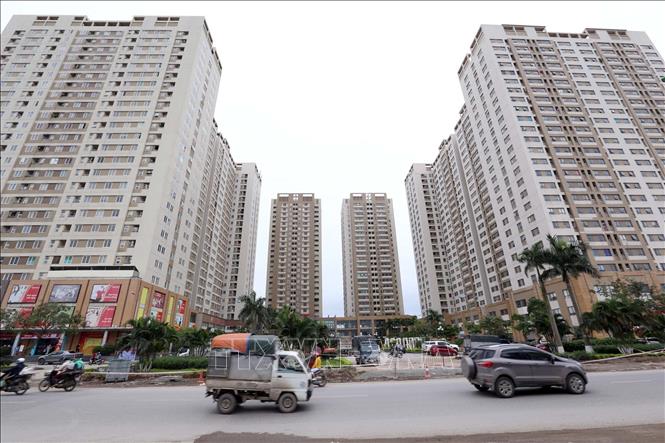
Tan Tay Do apartment complex is located in the new urban area in Dan Phuong district, Hanoi with 6 towers each having 25 floors. Photo: Anh Tuan/TTXVN
Experts have noted that the real estate market is still facing an imbalance of supply and demand, which is one of the reasons for its unsustainable growth. Only when the supply of affordable housing is increased can the supply-demand gap in the real estate market be reduced.
According to the Ministry of Construction, in 2023, apartment prices in Hanoi and Ho Chi Minh City, especially in central areas, will continue to rise. In Ho Chi Minh City, the prices of apartments primarily in the mid and high-end segments, especially in projects near the city center such as Binh Thanh District and Thu Duc District, have increased to over 60 million dong/m2.
Mr. Hoang Hai, Director of the Housing and Real Estate Market Management Department, stated that since the end of 2023, there have been almost no affordable housing projects with prices below 25 million dong/m2 in the market. Most of the projects are in the mid-range segment with prices ranging from 25 to 50 million dong/m2, making it eligible for capital mobilization and transactions.
Explaining this imbalance, Mr. Le Hoang Chau, Chairman of the Ho Chi Minh City Real Estate Association, said that the reason is due to legal obstacles in many projects that have lasted for years. Some lucky housing projects that have been approved and implemented have been “upgraded” by businesses and investors from mid-range and affordable housing to high-end housing in order to maximize profits.
As a result, there is a severe shortage of affordable housing in the real estate market. Meanwhile, the investment in social housing construction faces many legal obstacles due to more “restricted” procedures than commercial housing, resulting in a significant shortage in this segment.
Another factor that has driven up house and apartment prices is the market’s focus on luxury and high-end products, while there is a lack of affordable and practical housing. Luxury housing, which should only account for a small proportion, has dominated 70-80% of the market supply in recent years, leading to speculation and price increases – Mr. Chau analyzed.
To reduce the supply-demand imbalance in the real estate market, Dr. Doan Van Binh, Deputy Chairman of the Vietnam Real Estate Association, suggests the need for policies and regulations for affordable housing in the form of commercial housing without financial support as in social housing.
“Affordable housing projects in some countries are good references for Vietnam. The Vietnam Real Estate Association will conduct scientific research on this issue in early 2024 to make timely recommendations to the Government,” Mr. Binh said.
According to Mr. Binh, in addition to the ongoing project to develop 1 million social housing units, there needs to be more policies to attract private investment in affordable housing through administrative procedures, capital provision… Only social housing is very difficult to meet the housing needs of low- to middle-income people. Affordable housing needs to play a major role in the Vietnamese housing market.
From the perspective of experts, Dr. Nguyen Bich Lam, former Director General of the General Statistics Office, commented that in the past year, the real estate market still faced many difficulties, but thanks to the efforts of the Government, many timely policies were issued. Certain difficulties have been gradually resolved, creating favorable conditions for real estate production and business activities.
However, each real estate business also needs to restructure its business and real estate products. In practice, during this time, the real estate product structure has focused too much on high-end segments for the affluent class in the market. It is because of the excessive focus on high-end segments that the imbalance in supply and demand occurred, resulting in high property prices compared to their real value.
“Therefore, it is necessary to restructure real estate products to match the market demand. Only then can the real estate market develop in a healthy and sustainable manner,” emphasized the expert.
In 2024, the Vietnamese real estate market is expected to have more bright spots thanks to related laws such as the Housing Law, the Real Estate Business Law, and the Land Law, which have been passed and will take effect simultaneously in January 2025.
Clear legal corridors, unblocking bottlenecks, and further reduction of lending rates will stimulate the implementation of new affordable housing projects. Another expectation is that when the affordable housing support policies are better understood, the supply will also increase. At that time, the supply-demand balance will gradually return to equilibrium.









































